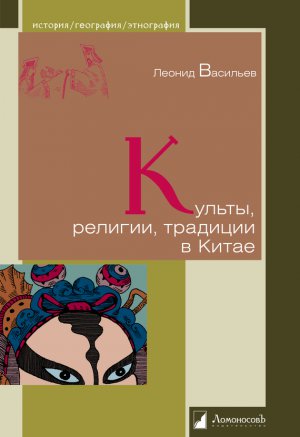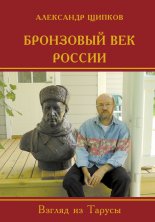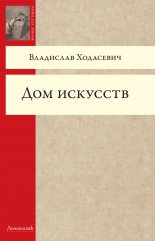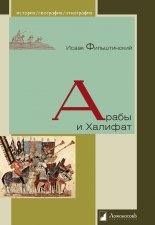Культы, религии, традиции в Китае Васильев Леонид

419. Gernet J., Entretiens du maitre de dhyana Chen-houei du Ho-tso (668—760), Hanoi, 1949.
420. Gernet J., Les aspects economiques du bouddhisme dans la societe chinoise du V au X siecle, Saigon, 1956.
421. Gernet J., La vie quotidienne en Chine a la veille de l’invasion mon-gole, 1250—1276, Paris, ,1950.
422. Gernet J., Les suicides par le feu chez les Bouddhistes chinois de V-e au X-e siecle, — «Melanges publies par l’lnstitut des Hautes
Etudes chinoises», i960, № 2.
423. Getty A., The Gods of Northern Buddhism, Oxford, 1928.
424. Giles H. A., The Remains of Lao Tzu, Hongkong, 1886.
425. Giles H. A., A Chinese Biographical Dictionary, Shanghai, 1898.
426. Giles H. A., Religions of Ancient China, London, 1905.
427. Gi les H. A., The Civilization of China, London, 1925.
428. Giles H. A., Chuang Tzfi. Taoist Philosopher and Chinese Mystic, London, 1961.
429. Giles L., Taoist Teachings from the Book of Lieh Tzii, London, 1947.
430. Giles L., A Gallery of Chinese Immortals, London, 1948.
431. Goodrich L. C., A Short History of the Chinese People, New York, 1957.
432. Goodrich L. C., China’s Earliest Contacts with Other Parts of Asia, Canberra, 1962.
433. Graham A. C., The Book of the Lieh-tzfl, London, 1960.
434. Graham D. S., Folk Religion in Southwest China, Washington, 1961.
435. Grainger A., Studies in Chinese Life, Chengtu, 1921.
436. Gra net М., La religion des Chinois, Paris, 1922.
437.G r a n e tМ.,Dances et legendes de la Chine ancienne,Paris,1926.
438.G r a n e tМ.,La civilization chinoise, Paris, 1929.
439.G r a n e tМ.,Fetes et chansons anciennes de la Chine,Paris,1929.
440.G r a n e tМ.,La pensee chinoise, Paris, 1934.
441. Gra net М., Categories matrimoniales et relations de proximite dans la China ancienne,— «Annales sociologiques», ser. B., Paris, 1939.
442. G r a n e t М., La polygynie sororale et le sororat dans la Chine feo-dale,— «Etudes sociologiques sur la Chine», Paris, 1953.
443. G r a n e t М., Coutumes matrimoniales de la Chine antique,— «Etudes sociologiques sur la Chine», Paris, 1953.
444. Gray J. H., China. A History of the Laws, Manners and Customs of the People, London, 1878.
445. Grenier J., L’esprit du Tao, Paris, 1957.
446. G г i f f i s W. E., China’s Story in Myth, Legend, Art and Annals, London, 1911.
447. Grimm G., Die Lehre de Buddha. Die Religion der Vernunft, Mfinchen, 1922.
448. Grisar Ё., La Femme en Chine, Paris, 1957.
449. G г о о t J. М., d e, Militant Spirit of the Buddhist Clergy in China,— TP, vol. II, 1891.
450. G г о о t J. M„ d e, Le code du Mahayana en Chine, Amsterdam, 1893.
451. Groot J. М., d e, Secterianism and Religious Persecution in China, Amsterdam, 1903—1904.
452.GrootJ.М.,d e,The Religious System of China, Leide, 1892—1910.
453.GrootJ.М.,d e,The Religion of the Chinese, New York,1910.
454.GrootJ.М.,de,Religion in China. Universism: A Key tothe Study
of TaoismandConfucianism, London — New York, 1912.
455.G г о s e G. R., The New Soul in China, New York, 1927.
456.G r u b e W., Religion und Kultus der Chinesen, Leipzig, 1910.
457.Grube W., Die Religion der alten Chinesen, Tubingen, 1911.
458.G u n d e r t W., Bodhidharma ung Wu-Di von Liang,— SJF.
459.G u t z 1 a f f C., Remarks on the Present State of Buddhism in China,—
JRAS, vol. VII, 1856—1867.,
460. Guy B., The French Image of China Before and After Voltaire,— «Studies on Voltaire and the Eighteenth Century», vol. XXI, Geneve, 1963.
461. Hamburger М., Aristotle and Confucius: A Comparison,— «Journal of the History of Ideas», vol. XX, 1959, № 2.
462. Hansford H. S., The Seligman Collection of Oriental Art, London, 1957.
463. H а г 1 e z C., Kia-li. Livre des rites domestiques chinois de Tchou-Hi, Paris, 1889.
464. H a r 1 e z C., Shen-Sien-Shfl. Le livre des esprits et des immortels. Essai de mythologie chinoise, Bruxelles, 1893.
465. H a r 1 e z C., La Religion et les ceremonies imperiales de la Chine mo-derne d’apres le ceremonial et les decrets officiels, Paris, 1893.
466. Hashimoto М., Veber die astronomische Zeiteinteilung im alten China, Tokyo, 1943.
467. H a u e r E., Das Ро-kia-sing,— MSOS, Jg. XXIX, 1926, № 1.
468. Hawkes J., Prehistory,— «History of Mankind: Cultural and Scientific Development», vol. 1, pt 1, London, 1963.
469. Hays H. R., In the Beginnings. Early Man and His Gods, New York,
1963.
470. Heine-Geldern R., Der Ursprung der alten Hochkulturen und die Theorien Toynbees,— «Diogenes», № 13, 1956.
471. Hentze C., Objets rituels croyances et dieux de la Chine antique et de 1’Amerique, Anvers, 1936.
472. Hentze C., Die Sacralbronzen und ihre Bedeutung in den fruehchine-sischen Kulturen, Antverpen, 1951.
473. Hentze C., Brozegerat, Kultbauten, Religion im altesten China der Shang-Zeit, Antverpen, 1951.
474. Hentze C., Tod, Auferstehung, Weltordnung, Zurich, 1955.
475. Hentze C., Gods and Drinking Serpents,— HR, vol. IV, 1965, № 2.
476. Herzfeld E., Iran in the Ancient East, London — New York, 1941.
477. Hirth F., Chinesische Studien, Munchen — Leipzig, 1890.
478. Hitchman F., Buddhistic Symbols on Chinese Ceramics,— «Oriental Art», vol. VIII, 1962, № 1.
479. Hoang P., Le mariage chinois au point de vue 16gal,— («Varietes si-nologiques», № 14), Cnang-Hai, 1915.
480. Ho do us L., Folkways in China, London, 1929.
481. Hoogers J., Theorie et pratique de la piete filiale chez les Chineis,— «Anthropos», Bd V, 1910, № 1, 4.
482. Hopkins L. C., Dragon and Alligator,— JRAS, vol. VII, 1913, №3.
483. Hopkins L. C., The Wind, the Phoenix and a String of Shells,— JRAS, 1917, № 2.
484. Hopkins L. C., The Dragon Terrestial and the Dragon Celestial,— JRAS, pt I, 1931, № 4; pt II, 1932, № 1.
485. Houn F. W., Chinese Political Traditions, Washington, 1965.
486. Hsiao Kung-chuan, Legalism and Autocracy in Traditional China,—«Tsing Hua Journal of Chinese Studies», n. ser., vol. IV, 1964,
№ 2.
487. Hsieh Yu-wei, Filial Piety and Chinese Society,— PCEW, 1962.
487a. Hsieh Yu-wei, The Status of Individual in Chinese Ethics,— CM.
488. Hsu Cho-yun, Ancient China in Transition, Stanford, 1965.
489. Hsii F. L. K„ The Myth of Chinese Family Size,— AJS, vol. XLVI1I, 1943, № 5.
490. Hsii F. L. K- (Hsfl Lang-Kuang), Under the Ancestor’s Shadow. Chinese Culture and Personality, New York, 1948.
491. Hsu F. L. K., Americans and Chinese: Two Ways of Life, New York, 1953.
492. H s u F. L. K., Clan, Caste and Club, Princeton, 1963.
493. Hu Hsien Chin, The Common Descent Group in China and its Functions, New York, 1948.
494. Hu S h i h, Religion and Philosophy in Chinese history, Shanghai, 1931.
495. Hu Shih, Development of Zen Buddhism in China,— «The Chinese Social and Political Science Review», vol. XV, 1932, № 4.
496. Hu Shih, The Chinese Renaissance, Chicago, 1934.
497. Hu Shih, Ch'an (Zen) Buddhism in China: Its History and Method,— PEW, vol. Ill, 1953, № 1.
498. Hu Shih, The Scientific Spirit and Method in Chinese Philosophy,--PCEW.
499. Hu Shih, The Development of the Logical Method in Ancient China, New York, 1963.
500. Hu Shih, The Right to Doubt in Ancient Chinese Thought,— PEW, vol. XIII, 1966, № 4.
501. Huang Siu-chi, Musical Art in Early Confucian Philosophy,— PEW, vol. XIII, 1963, № 1.
502. Huang Siu-chi, Chang Tsai’s Concept of Ch’i,—PEW, vol. XVIII, 1968, № 4.
503. Huard P. et Wong М., La mdicine chinoise au cours des siecles, Paris, 1959.
504. Hucker С. O., Governmental Organization of the Ming Dynasty,— HJAS, vol. XXI, 1958.
505. Hucker С. O., Confucianism and the Chinese Censorial System,— CAc.
506. Hucker С О., The Censorial System of Ming China, Stanford, 1966.
507. Hughes E. R., The Great Learning and the Mean-in-action, New York, 1943.
508. H u g h e s E. R., Epistemoiogical Methods in Chinese Philosophy,— CM.
509. Hughes E. R., Hughes K-, Religion in China, London, 1950.
510. Hummel A. W., The Art of Social Relations in China,— PEW, vol. X, 1960, № 1—2.
511. Hung Tzu-ch’eng, A Chinese Garden of Serenity. Reflections of a Zen Buddhist, New York, 1959.
512. Imbault-Huart C., La legende du premier pape des taoistes et lhistoire de la famille pontificate des Tchang, Paris, 1885.
513. James E. O., Prehistoric Religion, London, 1957.
514. Jan Yiin-hua, Buddhist Relations Between India and Sung China,— HR, vol. VI, 1966, № 1—2.
515. JohnstonR.F„ Confucianism and Modern China,New York,1935.
516. Kaiz uka S., Confucius, London — New York, 1956.
517. KarlbeckO.,Anyahg Marble Sculpture,— BMFEA,№ 7, 1935.
518. KarlgrenB.,Some Fecundity Symbols in AncientChina,—BMFEA,
№ 2, 1930.
519. Karlgren B., The Exhibition of Early Chinese Bronzes,— BMFEA, № 6, 1934.
520. Karlgren B., Yin and Chou in Chinese Bronzes,— BMFEA, № 8,
1936.
521. Karlgren B., New Studies on Chinese Bronzes,—BMFEA, № 9,
1937.
522. Karlgren B„ Huai and Han,— BMFEA, № 13* 1941.
523. Karlgren B., Some Weapons and Tools of the Yin Dynasty,— BMFEA, № 17, 1945.
524. Karlgren B., Legends and Cults in Ancient China,— BMFEA, № 18, 1946.
525. Karlgren B., The Book of Documents,— BMFEA, № 22, 1950.
526. Karlgren B„ A Catalogue of the Chinese Bronzes in the Alfred F. Pillsbury Collection, Minneapolis, 1952.
527. К a rlgren B., Marginalia on Some Bronze Albums,—BMFEA, № 31,
1959.
528. Karlgren B., Some Characteristics of the Yin Art,— BMFEA, № 34,
1962.
529. Kelley C. F., Chinese Art (A Selection of Articles from the 14 ed. of Encyclopedia Britannica), London — New York, 1932.
530. Kelley C. F. and Ch’en Meng-chia, Chinese Bronzes from the Buckingham Collection, Chicago, 1946.
531. Kiang Kang-Hu, The Chinese Family System,— «The Annafs of the American Academy of olitical and Social Science», Philadelphia,
1930.
532. К i о n g S., Quelques mots sur la politesse chinoise, Chanhai, 1906.
533. К1 i n e b e r g O., Social Psychology, New York, 1948.
534. Koppers W., Die Frage des Mutterrechts und der Totemlsmus im al-ten China,— «Anthropos», Bd XXV, 1930, № 5, 6.
535. Koster H., Symbolik des Chinesischen Universismus, Stuttgart, 1958.
636. Kou-Houng-Ming (Kou-Hong-Ming), L’esprit du peuple
chinois, Paris, 1927.
537. Kou-Hong-Ming et Bor re y F., Le catechisme de Confucius, Paris, 1927.
538. Kracke E. A, Family vs. Merit in Chinese Civil Service Examinations under the Empire,— HJAS, vol. X, 1947.
539. Kracke E. A., Civil Service in Early Sung China, 960—1067, Cambridge, Mass., 1953.
540. Kracke E. A, Region, Family and Individual in the Chinese Examination System,— CTI.
541. Kramers R. P., K’ung tzdchia yfl. The School Sayings of Confucius; Leiden, 1950.
542. Kramers R. P., Der Konfuzianismus als Religion,— AS, Bd XVIII— XIX, 1965.
543. Krause F. E. A., Ju-tao-fo. Die religiosen und philosophischen Sys-teme Ostasiens, Munchen, 1924.
544. Kroeber A. L., Process in the Chinese Kinship System,— «American Anthropologist», ri. ser., vol. XXXV, 1933, Ml.
545. К u 1 p D. H., Country Life in South China, New "York, 1925.
546. L a m a i r e s s e E , L’empire chinois. Le Bouddhisme en Chine et au Thibet, Paris, 1893.
547. Lang O., Chinese Family and Society, New Haven, 1946.
548. «Lao-tse. Тао-Тё-King»,/fibers. G.' Debon, Stuttgart, 1961.
549. Latourette K. S., A Short History of the Far East, New York,
1957..
550. Laufer B„ Jade. A Study in Chinese Archaeology and Religion, London, 1946.
551. Le Roy Davidson J., The Riddle of tfie Bottle-Horn,— AA, vol. XXII, 1959, № •/*•
552. Legge J., The Chinese Classics, Hongkong — London, 1861—1872.
553. Legge J., The Religions of China, London, 1880.
564. Legge J.. The Li Ki,— «The Sacred Books of the East», ed. M. Muller, vol. XXVII—XXVIII. «The Sacred Books of China, the Texts of Confucianism», vol. I—II, Oxford, 1885.
555. Legge J., A Record of Buddhistic Kingdoms. Being an Account by the Chinese Monk Fa-Hsien of his Travels in India and Ceylon (A. D. 399—414) in Search of the Buddhist Books of Discipline, Oxford, 1886.
556. Legge J., The Life and Teachings of Confucius, London, 1909.
557. Legge J., The Texts of Taoism, New York, 1962.
558. Lessing F., Ober die Symbolsprache in der chinesischen Kunst_
«Sinica», Jg. IX, 1934, № 3—4.
569. Lessing F., Bodhisatva Confucius,— «Oriens*, vol. X, 1957, № 1.
560. Leumann E., Maitreya-samiti, das Zukunftsldeal der Buddhisten, Strassburg, 1919.'
561. Levenson J. R., The Suggestiveness of Vestiges: Confucianism and Monarchy at the Last,— CAc.
562. Levenson J. R., Confucian China and its Modern Fate, vol. 1. The Problem of Intellectual Continuity, London, 1958; vol. 2. The Problem of Monarchical Decay, London, 1964; vol. 3. The Problem of Historical Significance, London, 1965.
563. L e v e n s о n J. R., Modern China and its Confucian Past. The Problem of Intellectual Continuity, New York, 1964.
564. Levy H. S., Yellow Turban Religion and Rebellion at the End of HanJAOS, vol. 76, 1956, № 4.
565. Li Chi, The Formation of the Chinese People, Cambridge, 1928.
566. Li Chi, The Beginnings of Chinese Civilization, Seattle, 1957.
567. Li U n g Вin g, Outlines of Chinese History, Shanghai, 1914.
568. Liang Ch’i-ch’ao, History of Chinese Political Thought, London,
1930.
569. Liang S i - i n g, La rencontre et le conflit entre les idees des Mis-sionnaires chretiens et les idees des Chinois en Chine depuis la fin de la dynastie des Ming, Paris, '1940.
570. Liao W. K-,The Complete Works of Han Fei tzfi, vol. I, London, 1939; vol. II, London, 1959.
571. Liebenthal W., On Trend in Chinese Thought,— SJ.
572. Lin T’ung-chi, The Taoist in Every Chinese,— THM, vol. XI, 1940—'1941, № 3.
573. Lin Yutang, My Country and My People, London — Toronto, 1936.
574. Lin Yutang, A History of the Press and Public Opinion in China, Shanghai, 1936.
575. LinYutang, The Importance of Living, New York, 1938.
576. Lin Yutang, The Wisdom of China and India, London, 1949.
577. Lin Yutang, Imperial Peking. Seven Centuries of China, New York, 1961.
578. Link A. E., The Earliest Chinese Account of the Compilation of the Tripitaka,—JAOS, vol. 81, 1961, № 2—3.
579. L i о n n e t J., Lao Tse, Tao Те King, Paris, 1962.
580. Liu Hui-chen (Wang), The Traditional Chinese Clan Rules, New York, 1959.
581. Liu Hui-chen (Wang), An Analysis of Chinese Clan Rules; Confucian Theories in Action,— CAc.
582. Liu Т. C. J., Sung Roots of Chinese Political Conservatism: The Administrative Problems,— JAS, vol. XXVI, 1967, № 3.
583. Liu Ts’un-yan, Buddhist and Taoist Influences on Chinese Novels, vol. I. The Authorship of the Feng Shen Yen I, Wiesbaden, 1962.
584. Liu Wu-chi, A Short History of Confucian Philosophy, London,
1955.
585. Liu Wu-chi, Confucius. His Life and Time, New York, 1955.
586. Llewellyn B., China’s Courts and Concubines. Some People in Chinese History, London, 1951.
587. Loehr М.,' Zur Ur- und Vorgeschichte Chinas,— «Saeculum», Bd 3, 1952.
588. Loehr М., Chinese Bronze Age Weapons, Ann-Arbor — London,
1956.
589. Loewenstein P. J., Swastica and Yin-Yang, London, 1942.
590. Lu K’uan Yu (ed.), Ch’an and Zen Teaching, London, 1962.
591. Luk C. (Lu K’uan Yfl), The Secrets of Chinese Meditation, London,
1964.
592. L у a 11 L. A. The Sayings of Confucius, London, 1935.
593. McClatchieT., Confucian Theology, Shanghai, 1877.
59 4. Macgovan J., Lights and Shadows of Chinese Life, Shanghai, 1909.
595. Mail la J. A. М., de, Histoire generale de la Chine, ou anna les de cet empire, Paris, 1777—1785.
596. Marsh R. М., The Mandarins, the Circulation of Elites in China, 1600—il900, Glencoe, 1961.
597. Martin W. A., Essays on the History, Philosophy and Religion of the Chinese, Shanghai, 1894.
598. Martindale D., Social Life and Cultural Change, New York, 1962.
599. M a s р е г о Н„ Le songe et l’ambassade de l’empereur Ming, etude critique des sources,— BEFEO, vol. X, 1910.






